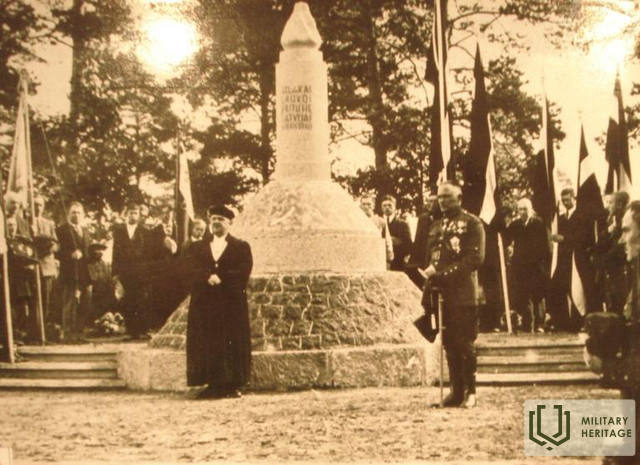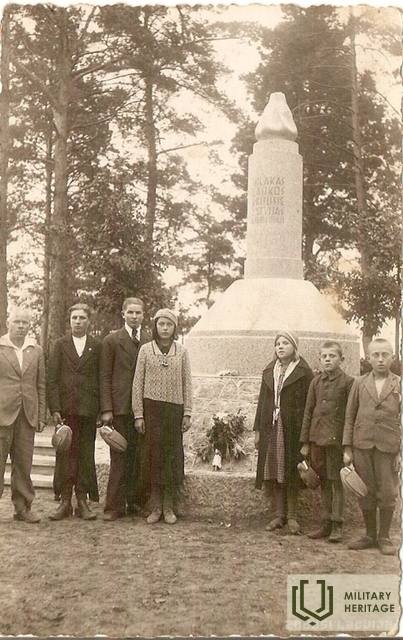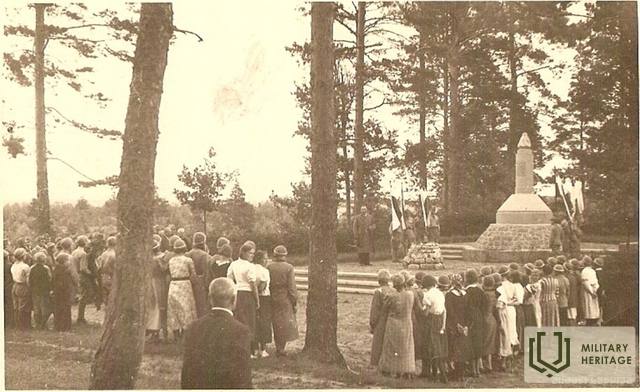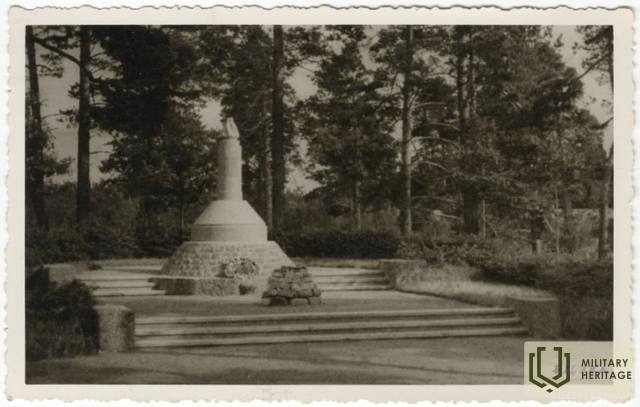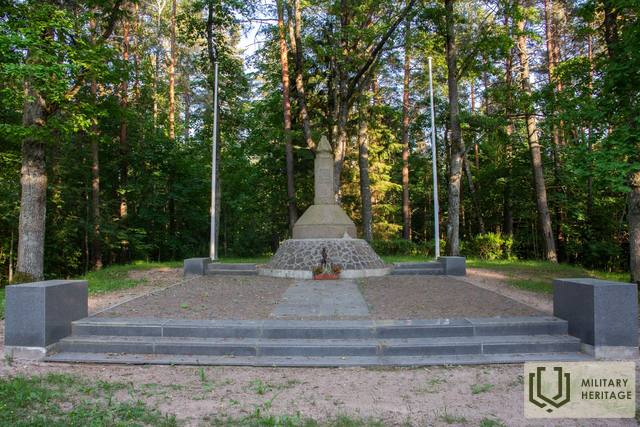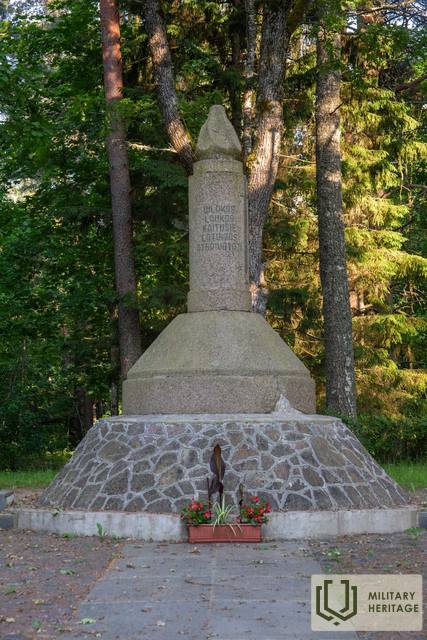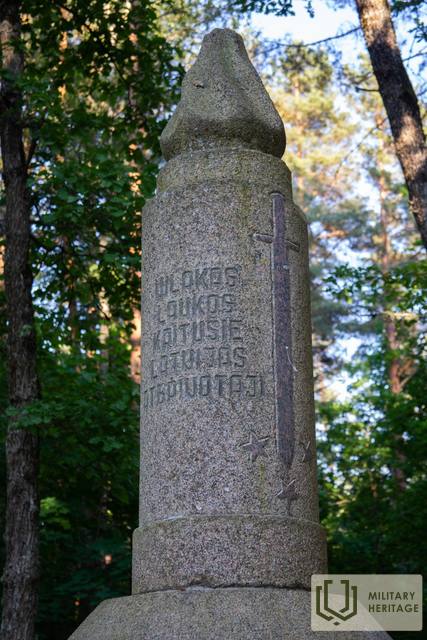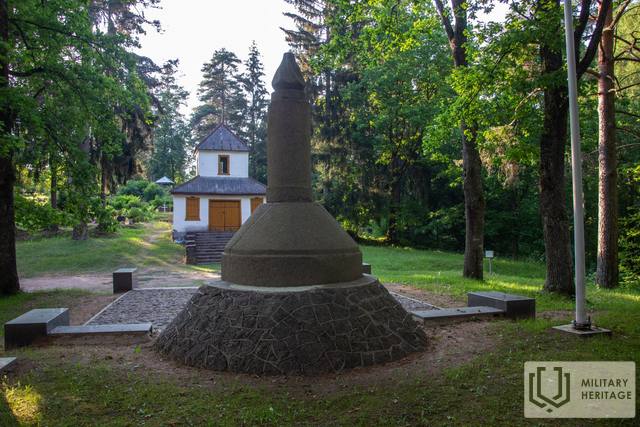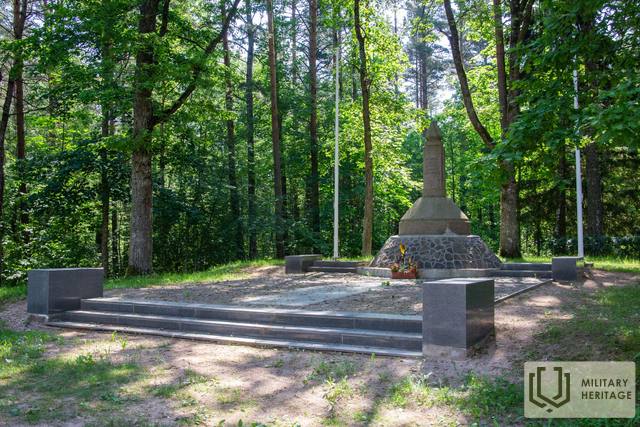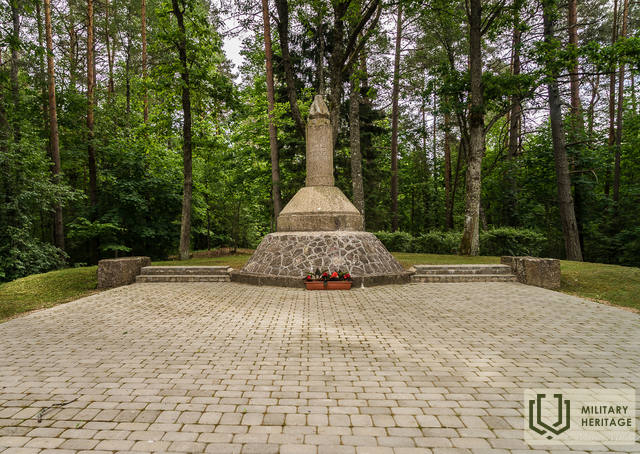Monument to the soldiers who fell in the Latvian liberation struggle in Yaškovo
Memorial site

 248
248


Located on the left side of the Viļaka – Vientuļi road section (P35), near the Jaškova cemetery chapel.
Monument to the Latvian and Estonian soldiers who fell in the War of Independence.
The monument, created by sculptor Kārlis Zemdega in memory of the soldiers who fell in the 1920 Liberation War in Jaškovo, was first unveiled on September 22, 1935, at the Viļaka Brothers Cemetery, established in 1929.
The freedom struggle against the Red Army in the Viļaka region began with the attack of the Latvian Army and the Latgale Partisan Regiment on January 9, 1920. Estonian soldiers also participated in it. Viļaka was liberated on January 9, but the fighting to the east of it continued for several more days. Both before and after the liberation of Viļaka, the fallen soldiers were buried in various places known to the local population. As the Latvian state stabilized, people began to think about arranging a common fraternal cemetery in Viļaka. Already on November 18, 1923, after a solemn service in the Catholic church, held by Dean P. Apšinīks, a large procession went to the newly created fraternal cemetery on a hill, in the so-called Jaškovs - in the immediate vicinity of Viļaka. Soon the foundations of the monument were built, and donations for the monument began to be collected. The identification of the graves of the fallen soldiers took time, and only on November 3, 1929, the reburial in the future fraternal cemetery took place. 31 Latvian and 14 Estonian soldiers who fell in the Viļaka area were buried there. In 1935, the monument was ready and it was solemnly consecrated on September 22.
During the pre-war years of Latvian independence, all important national events in Viļaka parish were associated with the fraternal graves and this monument.
The monument was destroyed during the post-war years of Soviet rule, but its granite parts, although damaged, were preserved. The monument was restored on November 11, 1990 - Lāčplēsis Day.
Used sources and references:
Based on materials by L. Maksimova
http://balvurcb.lv/kb/index.php?View=entry&EntryID=382
Related timeline
Related topics
Related stories
Liberation of Northern Latgale from the Bolsheviks
On December 1, 1918, the Red Army units, based on the Red Riflemen units, invaded the territory of Latvia. In order to protect their homes, families, native region and escape from terror, the men of the Balvi area took up arms and went into the forests, the formation of the first “green” groups began. In the spring of 1919, when mobilization was announced, many men of the Balvi area found fighting in the Soviet Latvian Army unacceptable and joined the “green” groups. The Balvi, Silakrogs, Rugāji, Teteru-Dūrupe and Liepna groups were formed. The activities of the “green” groups in the Balvi area became more active in March 1919.




